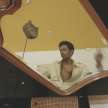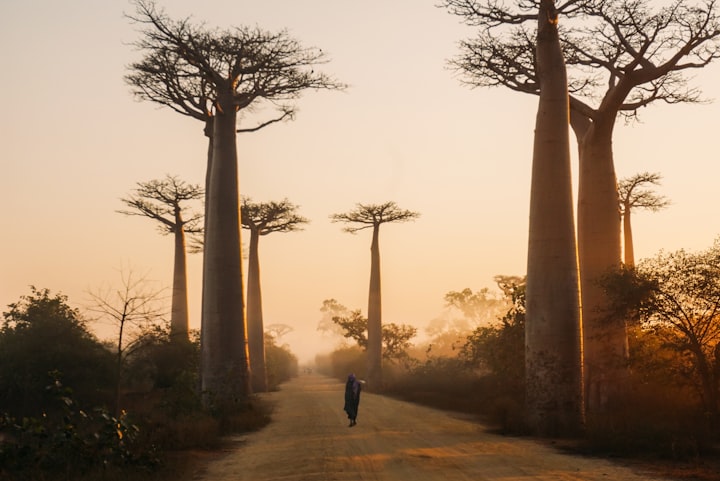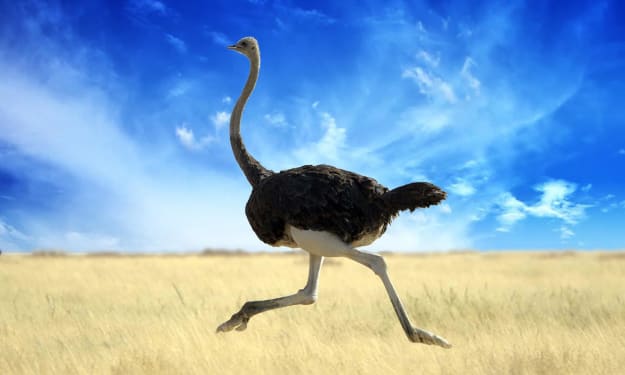
In Cameroon, political power was distributed in unities of uneven importance. Bordering the powerful kingdoms of Bamum and Tikar, we find on the northern region of the Cameroonian Grassland, countless groups of people of reduced significance.
The predominant artistic styles, of great complexity, aren't connected to the borders of the ethnic groups. Each society and brotherhood possesses its traditional masks and musical instruments.
Among the greatest of them, the noble people of Bamileke with its numerous subdivisions were expelled towards the high plateaus of central Cameroon by the Bamum people during a territorial expansion.
Despite such atrocities, all of the ethnic groups from Cameroon, find themselves in the origin of a rich and varied artistic production.
The ethnic groups in Cameroon are considerably small nation-states, in which the institutions are exceptionally well defined, with variations among them.
The ruling power consists of a chief, assisted by counselors, whose orders are executed by distinct secret societies and brotherhoods. One of the brotherhoods is the Night Brotherhood of the Bangwa people. It includes princes, noblemen, servants, and royal guards.

In Cameroon, the society is particularly hierarchal, with a predominant social stratification. The art realized for the royal palace is totally different from those found in the villages of ethnic groups.
Among the ethnic groups of the Cameroonian Grasslands, the chief or king is called Fon, naturally a royal resident at the capital, which, in this way, is converted into a religious and cultural centrality.
The royal palace is the house designated for art to shine through. Nevertheless, it's essential to understand that there are hundreds of ethnic groups in Cameroon, which indicate a vast spectrum of artistic expressions ranging from the small societies to the grand kingdoms of Dahomey or Benin.
Despite the large divisions in ethnicity, the lands of Cameroon have, for a very long time, been artistically fertile. Cameroon is one of the major creative centers in Africa.
The artworks in wood, metal, and ceramics are made in the hands of artisans who transmit from father to son the secrets of the craftsmanship and enjoy great recognition in the society.
Oftentimes, the Fon and the princes participate in artistic creations, as in the case of the wooden Babanki Fon sculpture, or the decorative motifs for the textiles of the Njoya king of the Bamum.

The wooden artworks acquired, at some point, monumental proportions which enlightened the way to the creation of architectural elements for the residences of chiefs and secret societies.
For the Bamileke, decorative sculptures are prestigious symbols reserved for notable people.
There's a distinctive representation of the wife of the chief, or queen in these respective compositions. Her image is characteristically looking ahead and surrounded by creatures of great ethnological value.
Creatures such as the turtles, which carry a role in ordeals. The spiders employed in ceremonial rituals. Aquatic animals such as the caimans and serpents stand as symbols of fertility, and above all, the leopard, a royal creature.
The statal art in Cameroon, in its essence, is oriented towards a courteous artform, evident in its appeal for adorns and illustrations of religious ceremonies.
Upon the inauguration, each Fon commands a dedicated statue to himself, and a second one for his queen, mother of his firstborn.
The queens, which are sometimes represented as pregnant, stand with attributes such as wine-filled pumpkins and bamboo flutes.

These statues aren't destined to occupy the altars of ancestors, yet they resemble majestic expressions for commemorative purposes.
Standing or sitting on sculpted support, the kings hold distinct attributes, ranging from pipes to horn libations, or machetes and the heads of rival leaders on one hand.
The generous forms of Cameroon, encompass a dynamic realism, in which crossed legs equilibrate the sculptures with solidity.
Evidently, amid the inhabitants and artisans of Cameroon, there is an immersive passion for the possibilities of polychromy.
About the Creator
ótomundi
antique and contemporary African art lover, from Luanda & Andalucia.
visit me at www.otomundi.com






Comments
There are no comments for this story
Be the first to respond and start the conversation.